- From Faith Current: “The Sacred Ordinary: St. Peter’s Church Hall” - May 1, 2023
- A brief (?) hiatus - April 22, 2023
- Something Happened - March 6, 2023
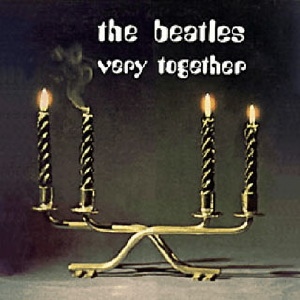
Worst Hanukkah EVER
In case you hadn’t noticed, here at Dullblog, we live to serve. One of the topics that seems to be of persistent interest — particularly to Beatle fans under 40 — is the theory that Paul McCartney died in 1966 and was replaced by a lookalike. (My personal theory is that Paul committed suicide so he wouldn’t have to go through the Get Back/Let It Be sessions.)
While there are lots of places to discuss PID on the internet, I’m creating this open thread so that people who want to dig into all the ins-and-outs of this theory have a place to do so. PID comments that stray into other threads will be moved here.
Please remember to adhere to community standards of civility and respect. Even though PID is a pretty wild topic, our moderation policies still apply.

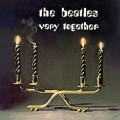

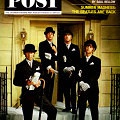




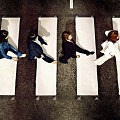



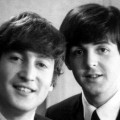
Paul is most certainly not dead. In fact, he will appear in the next Pirates of the Caribbean movie:
http://screenrant.com/pirates-caribbean-5-dead-men-cast-paul-mccartney/
I just love your comments so much, Sam. 🙂
Thank you Karen, your comments are always great.
I’ve been a Beatle fan ever since I heard them on our small kitchen radio and saw them on Ed Sullivan. I had older siblings who bought the early records; our house was full of Beatle music. I used to sing along with the records when I was six years old, and I drew Beatle comic books (unlike the Daily Howl, these were not preserved).
The “Paul Is Dead” fad: I never believed it. But here’s what always puzzled me: Why the Beatles? Why did a group that was all about love and positivity and creativity inspire death rumors and Manson obsessions and ultimately Chapman’s atrocity? There were plenty of other bands who made a career of flirting with disaster.
All I can figure is whenever and wherever there is great talent, the untalented attach themselves. The trick is for the talented to survive any damage the untalented can inflict.
And despite the silliest of rumors, Paul has survived. You gotta love him for that.
Why The Beatles? Because they planned and executed it! Why do I know this? John Lennon himself….”here’s another clue for you all, the Walrus was Paul!” That was in 1968, the PiD rumor didn’t start until 1969. Case closed. 🙂
The ‘why’ has often puzzled me, as well. My best guess would be: disenchantment.
The Beatles got famous not just for their music, but for their entire image, as well. People forgave them their cheekiness, rude comments, womanising, and other transgressions because they were so loveable. Paul in particular played a huge role in mollifying the critics; for every faux-pas John made, and for every scowl out of George, Paul was there to offset it with a wink and a smile. The Cute Beatle saved the day more than once.
So, imagine the disillusion when, after they stopped touring, the cute image was the first to go. All of a sudden, those four lads everyone loved were openly talking about drugs, involved in scandals, and looking like a bunch of unkempt hippies. In short: the four-headed monster turned into four individuals with less than charming qualities.
Now, people probably were quite able to accept the people John, George, and even Ringo became. But to see Paul McCharmley go down the same path, that must have been more difficult to handle for many fans. He was always the nice one, and here you have him talking about LSD and binbagging his long-time girlfriend and fiancee Joan, who most people adored, only to up and marry an American single mum, who drags him off to a farm in Scotland to live the hippie life.
I really do think the fact that the Fab Four stopped being the Fab Four and instead grew up into four not-quite-so-fab individuals planted the seed from which PID grew. People couldn’t accept the new status quo, especially concerning Paul, so they had to somehow preserve the Beatle Paul they loved so much. If a person dies, they never change. We can remember them as they were, perfect in our eyes, instead of acknowledging their faults. So, there lies the ‘necessity’ for the myth: If Paul died in 1966, when he was still the cute moptop we all knew and loved, then he never turned into that weird hippie who turned out to be so flawed.
I mean: the timing fits perfectly, right? The date he supposedly died perfectly coincides with the end of the Fab Four era. How convenient is it, that Paul ‘died’ right before he grew that ghastly moustache and started displaying his ‘unique’ sense of fashion?
Once people decided that his death was the only explanation for him turning into a person they didn’t like, finding the clues to confirm that idea was easy. I bet there are just as many clues on their previous albums, just as you can find ‘evidence’ for any conspiracy anywhere. All you have to do is cherrypick, and give an interpretation to unrelated things, so that they become related. I believe that’s exactly what the myth is all about.
I’m reading this extremely lucid and complex analysis, and it strikes me that we may be overthinking it (who, us? Never!)…
Why Paul? Because for whatever reason, Paul IS consistently depicted differently in visual material starting with Pepper. He’s the one who was barefoot and out of step on the Abbey Road cover. He’s the one wearing the black carnation in the MMT video, and the one in the dark costume rather than light on the cover of MMT. He’s the one in the “coffin” on Yesterday & Today. He’s the only one with the red background on Let It Be.
And a lot of the other clues are actually there, too (have you held the knife’s edge up to the drum on the Pepper cover?), though by no means all of them. Of course, most of the “clues’ are either misinterpretation (OPD/OPP, cranberry sauce, the fake idea that a hand over the head is a signifier of death, walrus meaning corpse in Greek, etc.) or the confirmation bias of seeing what someone expects/wants to see. And that’s most of it, but it’s not at all of it.
While I absolutely 100% do not think the PID thing has any merit at all, something IS up here. If it weren’t, we wouldn’t be talking about it, I think. There is a game afoot.
I’m at a loss as to what the game is, but I have a hard time dismissing all of it as mere coincidence, because I give the Beatles more credit than that, especially John and Paul, who were hyper attuned to the power of visual representation and wordplay. And of course, Paul was steeped in the post-modern art scene of the time and all its attendant winks and nudges and buried meanings. And it seems to me that they were always very careful with their attention to detail on visual material, just as they were in their music. And especially on the Pepper cover, which was planned it seems down to the smallest detail.
If it was them taking a piss at the expense of the fans who read things into their lyrics, which seems at least possible, then it was a really long game, since the groundwork was laid years before the PID thing developed. And if it WAS a hoax, that doesn’t account for how much Paul seems to be bothered (understandably) by the PID stuff. If he was in on the hoax, why would he now be bothered by it? But what other reason would these things be there? Something has to account for what we can see with our own eyes, and I have no explanation.
@Faith, read Devin’s chapter on PID in Magic Circles. He does a very good job of explaining the psychic underpinnings of the phenomenon which (to me at least) are very clearly a trauma reaction after the assassinations from 1963-68.
I also think John’s comment about Paul’s bare feet is relevant, @faith. It’s quoted in Anthology, but I don’t know where it’s from originally.
JOHN: Paul walked barefoot across the road because Paul’s idea of being different is to look almost straight, but just have his ear painted blue – something a little subtle. So Paul decided to be barefoot that day walking across the road. When you first glance at the album it looks like the four Beatles walking across fully dressed. That’s his little gimmick. I didn’t even notice until I got the album. I didn’t notice on the day that he was barefoot. We were just wishing the photographer would hurry up. Too many people were hanging around. ‘It’s going to spoil the shot. Let’s get out of here. We’re meant to be recording, not posing for Beatle pictures’ – that’s what we were thinking. And, I was muttering, ‘Come on, hurry up now, keep in step.’
It has a slight tinge of Lennon-post-breakup negative-towards-Paul revisionism, but I think there’s probably something to it all the same.
@meaigs Sure, it’s just that Paul’s explanation for Abbey Road doesn’t seem to explain why Paul is consistently depicted as different from the others from 66 on across videos, albums. I mean, it explains that particular incident, yes, as a data point of one, but not the overall pattern.
Maybe it’s Paul’s attempt to separate himself from the pack a bit? Pepper was when he came into his own, creatively. Perhaps it’s his subconscious way of stepping into that role? That might explain it.
So for example, Paul claims that on MMT, the florist “just happened to bring three red carnations and one black one.” First, just happened? Yeah, right, okay, whatever you say, Paul. 😉 But let’s even assume that’s true — then Paul selecting the black one could absolutely be perhaps his subconscious desire to stand out, which would be consistent with Paul’s headspace at that time. But for me, it’s that initial “there just happened to be three red/one black” that nudges my spidey senses in thinking that something else is going on there.
@Michael, I adore Magic Circles, as you know, and I think Devin in general gets closer to underlying truths on most things than most Beatles writers do, especially that glorious first chapter!
That said, I have a lot of trouble buying into the premise that links any of the Beatles’ story with assassination trauma. Maybe it’s just because I didn’t live through those times so I underestimate the impact, but on a gut level, it doesn’t ring true and I mean that in an “I read Kennedy assassination/Beatles reasoning and I get grouchy” kind of way. I’ll have to think through why at some point — it seems like there might be something worth exploring there that I’m not fully seeing yet in terms of what feels off about it to me.
@Faith, it’s very difficult for people not of that generation to understand just how deeply young people were wounded by JFK/MLK/RFK. How EVERYBODY was wounded; deeply shocked; deeply saddened; but especially the young, white members of what would become the counterculture. It was a shared experience as big as anything the Boomers endured, including Vietnam and The Beatles — not just the murders, but the endless discussion and analysis of “clues” in the wake of the Warren Commission; the very same campuses that Mark Lane was going with his traveling exhibit, were years later the site of PID.
This is no coincidence. PID sounds exactly like a pop-cultural version of a JFK assassination debate…except it’s totally fun. PID rests on the reality that it doesn’t matter whether Paul died or not. “Paul” and “Faul” can both write, sing and play beautifully; the Beatles’, and Paul’s, music progresses seamlessly, and gorgeously between 1966 and the next years. If Paul was really William Campbell after November 1966, all I can say is–that Campbell guy sure has talent. 🙂 Are we sure Campbell didn’t kill Paul, so he could get his big break?
PID is nonsense on its face–it’s as if JFK had been shot, and then seamlessly replaced by a person that looked exactly like John Kennedy, who remained President for several more years despite having not been a notable politician previously, and in fact did President-stuff a little better than the old JFK. And nobody said a word, but gave little clues. In the mid- and late Sixties, Paul McCartney was as famous as a President, and under as much scrutiny. So why do people still talk about PID? Why do they circle PID like raccoons circling a garbage can? To understand PID, you have to go back to when and how the story emerged: the rumor started in very late 1966, and then went mainstream in fall 1969, after being discussed on college campuses, and then was used as grist by mass media. (I suspect Klein used it to sell albums; he should’ve.)
What died in late 1966? Not Paul McCartney — Beatlemania. There were millions upon millions of people who’d spent the previous years as kids, obsessing over one version of The Beatles. That version of both themselves and The Beatles was no more. To these fans–and to the Beatles themselves–the end of touring certainly felt like a death. Remember too that no group had survived, or even attempted, such a change.
Those feelings created a story, as feelings do.
To this psychological event — the passing of Beatlemania — you suddenly add much richer, more ambiguous music, and pqckaging, and weirder public personas. Suddenly The Beatles aren’t just a group, they are a text to decipher. Once again, look to the chronology: by 1968-69, the people who were teenagers in 1964 are, many of them, now in college being taught to do what? Decipher and interpret texts.
Even so, it’s unlikely that these two factors would’ve pushed PID into the cultural mainstream without one more thing: the profound darkening of the Sixties during and after 1968. PID isn’t a neutral myth, it is a deeply paranoid vision of senseless violence, unacknowledged bereavement and massive manipulation and betrayal. It is the fantasy of a generation that’s both paranoid from marijuana a lot of the time AND getting fucked over daily by Vietnam AND is having its civic life actively suppressed via actual espionage–counterinsurgency operations like the fBI’s COINTELPRO and CIA’s CHAOS. It has watched its heroes be executed in public with no meaningful change to society. Since the mainstream political culture, press, and academia seems satisfied with a whitewash, it does the only thing it can do: collect “clues,” and debate endlessly “what really happened,” in an effort to gain a measure of justice, and make sense of what has happened.
If you’re sensitive to the history of the time, especially as it was being experienced by the generation that was the core of the Beatles’ fandom, I think PID is amply explained–first as a subterranean reaction to the end of the touring Beatles, the only Beatles their fans had ever known, and the Beatles disappearance from the public eye between the end of touring and Pepper. Then, as reality got a lot weirder and darker, the myth brought The Beatles–an unalloyed good thing, the Boomers’ unmurdered heroes–into alignment with a world that felt violent, unfair, manipulative, and fucked.
And not for nothing did this myth break worldwide as the group itself was splitting. The fans knew something was up, they just didn’t know what.
(BTW, not that you asked, I do not think Beatlemania was caused by the first Kennedy assassination.)
Michael, another wrinkle I’d like to bring up is the current obsession with JFK, and JFK Jr., among a subset of the Q-Anon conspiracists. They’re led by a guy who goes by “-48” (it’s a numerology/gematria thing), and are camping out in Dallas, where they’ve been since the fall. They’re waiting for JFK and JFK Jr. to reappear — and for JFK Jr. to be Trump’s running mate in 2024.
The Faulkner quote that “The past is never dead. It’s not even past” seems more accurate than ever these days. It’s clear that JFK symbolized something huge to many, many people, and continues to even with people who weren’t born when he was assassinated. I agree that the assassination, the investigation, and the sense that there was a coverup was a turning point in American culture: I think we can draw a line from the kind of distrust of experts and institutions that began with the JFK assassination and Watergate straight to Q-Anon.
PID seems to me like a sandbox version of the deeper, darker conspiracy theories. “Raccoons circling a garbage can” is a perfect description of the continuing fascination with this topic by conspiracy mongers.
What I see in this is the utter cynicism of the Attention Economy. The Q people bolted on JFK/JFK Jr in an attempt to make its theory more viral among Boomers, and specifically Boomers with a predisposition towards “hidden history.”
The unfortunate thing is that the JFK research community–and at its best, that high-sounding label is definitely deserved–is interested in an actual historical event, with undeniable ramifications here in this reality. We know JFK was shot; we know that had profound effects on American society and politics, most of which people did not want. With Q and PID, they start from something that didn’t happen, then build a story that people want.
The JFK researchers I knew were much like progressive political activists; their mission was to reveal what had happened, so that future politics would be conducted in a more honest, more effective, more humane way. Ditto the people interested in MLK and RFK and Malcolm X. It was felt we owed these human beings radical honesty about how they died, at whose hands, and why–because they themselves were so interested in political and social reform based in radical honesty. The fear was/is, to allow them to be murdered, and have those murders so shoddily investigated, with conclusions that did not have any political impact–that’s what “lone nut” means in practice–would reduce the penalty for killing political reformers. And that’s exactly what it did.
It’s unlikely that if the Warren Commission had turned the government upside down in 1964, and say Allen Dulles had been found guilty of treason and shot, that the Chicago Police would’ve been so eager to kill Fred Hampton five years later. If powerful people had felt real consequences when America’s great reformers were murdered, those powerful people would ensure better protection for them in the future. But the Warren Commission sent the opposite message and, unsurprisingly, a bunch of reformers were murdered. So many that by 1968 Richard Nixon and the Republicans were in power, where they’d stay for 20 out of the next 24 years, beginning the process we’re suffering through today.
QAnon, PID, these are garish, ghoulish fables blasted out on the internet with no connection to reality, and no real purpose except attention. There is no greater goal here — no “action items.” Their effect is to create distrust, disorder, and a nihilistic sense that “everybody is lying to you.” That’s 180 degrees from assassination research, which is an admittedly quixotic endeavor, but is at its core grounded in shared reality.
@michael
your quote: “What died in late 1966? Not Paul McCartney — Beatlemania. There were millions upon millions of people who’d spent the previous years as kids, obsessing over one version of The Beatles. That version of both themselves and The Beatles was no more. To these fans–and to the Beatles themselves–the end of touring certainly felt like a death.”
—
I do think Paul was the focus of a lot more of that than the others for all kinds of reasons, not the least of which he was the one who seemed to enjoy and lean into it the most. And he was almost certainly the one who inspired the most teenage sighs. (says this very not-teenager who still sighs over 1964-5 Paul…. I mean, good god…)
My hitch with that is, that PID didn’t start until well after the end of Beatlemania, long after those fans had had years to acclimate to the changing, more complex and darker version of the Beatles and well after Sgt Pepper, etc. had won their hearts and minds. That’s a hell of a delayed reaction — why in 69 and not in 66? (A surface answer is that the clues didn’t start until 66 and it took awhile for them to accumulate, but if it’s a trauma reaction to the end of Beatlemania, the juice should have gone out of the whole thing by the time the clues had amassed.)
I hear you about the collection of social factors that contributed to the rise in distrust, paranoia, despair, etc. especially in the wake of the collapse of the Summer of Love and the disillusionment that followed. Maybe there’s a link there, too — not only does Beatlemania come to and end, but so does the Summer of Love, with nothing better and everything worse. I think this’s a credible identification of the soup that PID and its adherents was swimming in.
Still… my spidey sense tells me there’s more to it, not talking this time about my original comment about Paul being depicted differently after 66, but more in terms of why PID resonated. I don’t think anyone has REALLY gotten to the bottom of the PID thing yet otherwise we wouldn’t still be puzzling it out. I feel like a collection of contributing factors has been collected, the ones you and Devin lay out, but the root cause that goes below current events, that lurks in the subterranean river of the collective unconscious that is the psychic fuel source for that reaction to those events, that I think remains undiscovered.
I feel like the social factors that you and Devin identify, and the reaction to them, are like a big blinking arrow pointing to the root cause but not the cause itself, which is timeless and archetypal and composed of much earthier and more primal stuff. What that is for PID, I do not know, but I feel sure it’s there quiet bubbling beneath the surface, waiting for us to discover it. (Now I’m sounding like a conspiracy theorist, but I really mean to imply more of a Jungian/collective unconscious treasure hunt.)
There’s a book Turn Me On Dead Man, on my Books to Get Amazon list. Maybe I should order it finally. Maybe there’s something in there that hasn’t been said before. I doubt it, but…. maybe.
And yeah, I think it’s important to separate Beatlemania from PID, and that’s not something I made clear in my comment, where I was erroneously conflating the two. Which I think I tend to do because I instinctively recoil from any connection between the assassination and the Beatles. To me, those connections feel like they cheapen the importance of the Beatles by implying that there’s no magic there, that it’s just some reactionary response to an unrelated and awful event. Coulda been anyone, really, just timing, etc. Of course good scholarship is about separating that we want to be true from what really is, but if that’s all there was to Beatlemania, we wouldn’t still be obsesssing about it, I think.
Wait, what do you see when you hold a knife’s edge up to the drum on the Pepper cover?? I have a book of rock lists somewhere which listed all the clues (us kids had a field day looking/listening for all of them) but it didn’t include that one. Do tell.
When I was just getting into the Beatles at about 8 years old or so, I started with their early records among my parents’ collection and immediately fell in love with John’s voice, and John himself. When I made my way to their copies of Let it Be and Abbey Road, I looked at the covers and was sad thinking the band had replaced John! He looked so different from his younger self, more than the others. But then I gave the records a spin, and that distinct voice made me realize it was still John. So this whole Paul is Dead thing is weird to me, like why him?
Also, doesn’t it strike people as funny that the date that Paul supposed died – November 9, 1966 – is the same date that John met Yoko?
@Michelle,
https://turnmeondeadman.com/paul-is-dead-clues-on-sgt-peppers-lonely-heart-club-band/
There’s a photo there of what happens when you put a reflective surface halfway across the letters on the drum. It’s very hard for me to see this as a coincidence. I still think there were Beatles shenanigans afoot. Or maybe Robert Fraser shenanigans…
Edit: Jane, not Joan. It’s early and I’ve just gotten out of bed….
Aha, yes. But P.i.D.ers have already latched on to the fact that Macca will be appearing in the ‘Pirates’ movie that refers to ‘dead men’ in its title. This is a clue apparently.
Having read Batman #222, I know for a fact “Saul Cartwright” is ALIVE!
DPS, I’m old enough to remember when Batman #222 first came out. I bought it and saved it. As I recall, it was a two-part issue. I remember thinking at the time I should take extra care in saving it, as it might be historically significant someday. And now I can’t find it.
We moved back in 2013, and I hope I haven’t lost those comics. I’m guessing they’re somewhere in our house; I’m just not sure exactly where.
I remember at the time being fascinated with the art work. Some of the drawings are spot-on caricatures of JohnPaulGeorge&Ringo, while others don’t look like them at all. I don’t remember who the artist was, but he didn’t have the Mort Drucker/Mad Magazine facility for perfect caricature.
I also remember that this was a time when the Batman/Superman/DC comics were trying to reinvent themselves as socially “relevant” and so had characters appearing in nehru jackets and love beads. It was around that time they did a remake of the first Batman comic, and tried to update it with a late 1960s sensibility which seems today more dated than the original comic.
Part of me wants to tear up my house now to find those two comic books, and part of me is too damn tired to make the effort. Maybe in twenty years, if I’m still alive, I’ll see if I can find those comic books. Or maybe after I’m gone my sons will find them before the estate sale.
Hello everyone,
Commenter Chica just posted, on the “Were John and Paul Lovers?” thread, a reference to an interview with Ringo Starr in which he allegedly said Paul was dead and he was the last Beatle. Here’s what I found out through looking it up online — I’m adding it here because it’s relevant to this conversation.
____________
Here’s a link to a piece on the Daily Mirror site that says the “interview” with Ringo was satire. The “interview” originally appeared on WorldNewsDailyReport, which cited “The Hollywood Inquirer” as the source. Here’s what the Mirror has to say:
“The Hollywood Inquirer doesn’t actually exist, and Ringo Starr certainly hasn’t granted them an exclusive interview. WorldNewsDailyReport is a satirical news website and is for entertainment purposes only.”
To piggyback here on Nancy’s comment, many PID’ers cite this research by Gabriella Carlesi and Francesco Gavazzen, who examined photographs of McCartney pre and post 1967 and who apparently concluded that the photos don’t match. Interestingly, someone by the name of R. Gary Patterson contacted a member of the Tennessee Bureau of Investigation, who had trained at the Body Farm, in Knoxville. Here’s what this forensic expert said:
When you consider the fallibility of this forensic “evidence”, together with the galactic impossibility of finding an exact clone of a world-famous person in looks, talent, etc., one can easily dismiss PID as a conspiracy theory gone wild.
Karen, this will seem forward as I am already married, but will you accept my proposal? 😉 You posted exactly what I was going to!
The thing that gets me about those PID photo analyses is that aside from being sloppy from a scientific angle – and not using anything remotely akin to forensic science – they seem to ignore the existence of photo editing. The mysterious color changes or angle differences they seem to see are explained by color correction and resizing/cropping (which is done to every photo we see, unless we’re working from the actual verified negative). I’ve even seen photos on PID sites that have been flipped direction from the originals (without the posters apparently being aware).
I’ve written here before, but what prevents me from thinking PID is just some fun diversion (which I know that most of the online adherents consider it as, they don’t actually believe Paul is dead) is that it involves imagining something terrible happening to someone who is very much real. It was sobering to both read Mike McCartney’s account of being forced to listen to a PID “expert” on a U.S. talk show in 1969 and to hear the audio of his reaction on the show. It was a reminder that to the very real people who love Paul McCartney the human being, there is no “fun” in such a game.
Exactly. Someone posted a blog oh HD a while back, stating PID was merely fun, and should be treated as such.
Well, I disagree.
Terrible things are being said about real people. I’m not just thinking about the abusive language aimed at ‘Faul’, who we all know is Paul, but that alone is enough to make you physically ill. I can laugh at the ‘used car salesman’ thing. After all, Paul’s style hasn’t always been the best and he’ll probably be the first to agree on that. I can even snigger at someone saying ‘Paul died, because women stopped being attracted to him after 1966’. That one is just silly; I know women of all ages who are still attracted to Paul, even with his saggy skin, liver spots, and questionable hairstyle.
It’s when people throw around accusations of (conspiracy to) murder, paedophelia, identiy theft, and other major crimes, that the meme stops being funny. When people start muttering things akin to ‘someone should teach that impostor a lesson’, that’s when it becomes outright frightening. We’ve seen it with George and John: one deranged individual can do serious harm. Paul is relatively accessible: he walks the streets every day, sometimes uses public transportation, and does other things that make him an easy target for anyone who wants to harm him.
It must be a drag, not just for Paul, but for everyone around him. Mike, indeed, had given several interviews on the subject. He’s tried to use humour to show the preposterous nature of the myth, and even that gets used as ‘evidence’ because ‘Mike said, he last saw Paul at his funeral, so he admitted it’. No, it’s called humour, and it went over your head. But don’t tell them that, because you’ll be labeled a disinfo agent.
There is no fun in it at all.
Chantal, I’d add that believing PID also involves seeing John, George, and Ringo as long-term liars. It necessitates seeing vast numbers of others (George Martin, McCartney’s family, etc.) as dupes or cynical members of a conspiracy. Basically, it entails taking a smaller, meaner view of pretty well everyone connected to the Beatles.
Combine this with the near-fundamentalist fervor with which some PIDers explain evidence away, and I find the whole thing profoundly depressing. In high school I watched a friend succumb to belief that the Illuminati were about to take over the city where we lived, and that experience has led to my having a lasting distaste for irresponsible conspiracy theories. I believe such theories can do significant harm not only to those featured in them, but also to people who become true believers of them.
I completely agree, Nancy. I didn’t want to venture into that as early in the morning as I wrote that post, but I am in absolute agreement on that.
I hope this reassures people, I mean it to: PID is an internet phenomenon. I have met a LOT of Beatles fans, and a LOT of JFK assassination people (whom one might assume — often wrongly, as it turns out — to be comfortable with outrageous tales), and not one of them has ever mentioned PID.
We mustn’t give this view too much power. If people choose to believe it, that is up to them — but the idea of “crazy people taking over the world” is also an internet phenomenon. A vanishingly small number of Beatles fans honestly believe that Paul McCartney died in 1966 and was replaced by a lookalike. Those that do put up websites, and the echo-chamber makes it sound louder.
“‘Paul died, because women stopped being attracted to him after 1966’.”
Clearly these people have never seen bearded Rooftop Paul.
Ha–I accept Rose. 😉
The photo “analysis” on PID sites is just sad. PID’ers search for “clues” which are in line with what they already believe. Confirmation bias is rampant.
The larger question, of course, is why people believe it. Here’s a good article on the psychology of conspiracy theory:
@Karen, to me, the very idea of “conspiracy theory” is an unhelpful concept, and the idea that there’s “a psychology” behind it, even less so.
The only intellectually sound way to address contested history is to dig into the evidence and come to the most likely conclusion. The theory that Lee Harvey Oswald acted alone is not the most likely conclusion; it is, to be frank, only believed by dead-enders like John McAdams and the MSM (which totally missed the story in the first place, suddenly switched to the conspiracy side during the Watergate era, and switched back after Reagan). The Oswald theory is refuted by a mountain of basic evidence, despite a concerted effort from the very beginning (Katzenbach’s memo on 11/24/63 is a great example of this) to reject or distort any data that did not fit that conclusion.
JFK’s murder was a crime, just like someone breaking in to a house and stealing a TV set; anybody who equates that with UFOs or Bigfoot isn’t being honest. And if people don’t see the inherent conflict of interest built into a government body investigating an assassination, they are simply foolish. It is not cynical to assume that people work in their own best interests, and to call that cynicism is peculiar.
Whoever pulled the various triggers, one cannot understand the PID phenomenon without acknowledging the psychological damage the assassinations inflicted on the Boomers; nor the acknowledged programs run by the FBI and CIA to suppress liberal/left dissent; nor the tendency of heavy drug use to instill paranoia.
“Karen, to me, the very idea of “conspiracy theory” is an unhelpful concept, and the idea there’s “a psychology” behind it, even less so.The only intellectually sound way to address contested history is to dig into the evidence and come to the most likely conclusion. ”
First, I’m talking about delusional beliefs, not rational suspicion. And there ARE absolute psycho-social underpinnings to delusional beliefs. There’s simply no dispute about that.
The JFK assassination was an AMERICAN phenemena; one cannot assume that it affected non-Americans in the same way it affected Americans. Conspiricism, on the other hand, is world-wide and culturally indifferent; what binds all conspiracy adherents together is a fundamental distortion of their personal psychology and how that affects their world view.
And to say that the only way to address contested history is to dig into the evidence assumes that the person is psychologically capable of doing so. We’re not talking about reason, here; reasonable people who have logical reasons to be suspicious; we’re talking about people hanging on to a belief regardless of its irrationality and in spite of all logic to the contrary. I think it’s important to make that distinction.
Fair points, but here’s the sticking point:
“people hanging on to a belief regardless of its irrationality and in spite of all logic to the contrary.”
What’s delusional and what’s rational depends on the speaker and the context, and too often depends on authority. For example, in the late 60s, it was commonly asserted by hippie-types that their rallies were being infiltrated by government agencies. At the time they were dismissed as paranoid freaks…until we learned that was exactly what was happening.
To me, it is totally rational to believe that heads of state are murdered for political reasons; and the more one learns about that particular event, the more plausible it becomes. Yet the American MSM regularly groups political murder in with supernatural, cryptozoological, and religious beliefs. That is completely irrational, and begs the question, “Why?” Why, for example, are we discussing political murder in a thread about PID? The only possible connection is the idea of “conspiracy thinking,” which to me is not so useful.
There are conspiracies, and there are fantasies — the trick is finding the difference. The problem is that people like Bill Saletan, websites like Slate, and the MSM they grew from aren’t interested in telling the difference — for structural reasons they too often disregard their societal watchdog function. And it’s these very structural reasons that keep the question under debate; if the American media and academia had done its job in 1963-64, we would know what happened (and yes, it’s possible Oswald did it — but vanishingly unlikely).
With all the damaging irrational beliefs in the world — “the Invisible Hand” and trickle-down economics, to name two; God having an opinion about what you do with your genitals, to name another — the MSM pours scorn on those interested in solving a political murder-mystery. Seems worth commenting on, if you ask me — while still agreeing that there are lots of crazy people who believe crazy things.
My description was not intended to describe every single instance of a suspected conspiracy, and I’m not suggesting that all suspected conspiracies are delusional. People who believe that Paul McCartney died and was replaced by his exact clone ARE hanging on to a belief, regardless of its irrationality, and in spite of all logic to the contrary. If you have a better way of describing it, I’m all ears.
Not arguing with you, @Karen. My problem is with Saletan.
Michael, did you ever read the ‘Weird Scenes Inside the Canyon’ book?
When it was online, I read a bit.
Open thread? Here’s one of my favorite Beatle covers: Elvis Costello, Live Aid 1985, his version of an old English folk song:
https://www.youtube.com/watch?v=ZB7-iOg516w
People love conspiracy theories. PID is really no different than the moon landing “hoax” or an of the other dubious stuff that exists out there. These things seem to become cottage industries for their purveyors, who sell books and documentaries. The fact that it lives on and on is really the only interesting aspect of it for me.
Dare any one tap Ringo on the shoulder and remind him (if we’re to assume that Paul is ‘dead’) that he isn’t the only remaining surviving Beatle… Pete Best is still with us!!
Once I got onto PID sites and respond to PID trolls on Beatles/Paul comments, I lists these various issues but always forget his 65 moped front tooth cap issue noted in earlier and later Paul pics but in old age seems to have had dental implants. I have such a large collection of early/later and solo Beatles and Paul mags/real photos/books/posters and had gone through them several times through years doing my own comparisons. However, seeing so many computer doctored and photoshopped pics had me doubting my self, so went through again, and hate to burst PID bubble, but is the same man.
On your Paul is dead post, I want to add comment that stumbled into extreme PID sites when trying to research the tru Paul meeting Mark Lane JFK book author in 66. The videos and comments on those sites as well as constant PID comments on regular Paul and Beatles videos have cause me on several occasions to write YouTube misinformation reviewers with PID specific channels and sites. I TRULY fear for Paul’s safety, and after John and George this is not paranoid. Many PID sites are WAY out, emphasizing occult, tavistocked sixties musicians, particularly the Beatles and Paul.
Despite Paul having lifelong physical anomalies: height same but boot heel elevation affects and perspective in some pics, side view bent spine with slight back hump, same skull shape, when thinner upper thighs then, same hazel eyes but dark in back/white photos, same jawline, nose( except different in some old age cosmetic plastic surgery st times), same skull shape, left iris always smaller, left level slanted down, except in old age extraordinary vocal range, and expert voice analysis of younger and later Beatles providing SAME man, PIDers persist, as they cite documentaries that are fake/ or propaganda, fake Italian study later computer checked and is fraudulent, dubbed videos some even PIDers admit are fake, They cite sheers memoirs as proof and internet notes written by former religious book writer: Paul sacrifice/faul risen Christ. PIDers don’t agree but many believe Billy hey call him, hoaxers original William Campbell first, Billy sheers, Billy Shepherd British fanzine writer the standfall bongo dog dude Macca sub. The DO NOT DO SCIENCE or FACTS, are almost ALL under 40, and believe other conspiracies, as a gullible bunch and generation.
It would be kooks and all OK except for extreme vitriol against Paul. They spend hours trolling and commenting on Beatles/Paul sites. I see many of the same names, and am amazed as if I think some an imposter I would not waste time. That the PID videos and comments were so horrific are was moved me to contact youtube with lists. Otherwise, a study in PID would be urban legend and as renewed by alt righters on reddit that ballooned to youtube, it is a textbook example of fascist historical denigration of Paul and the Beatles as emblematic of liberalism and the sixties ideals. Were it not for extreme hatred and vitriol against Paul, it would be interesting as urban legend belief and sociologically indicative of our time.
Ex wife Heather pedo references to like em young could mean HER as much younger than him, shamelessly doctored and photoshopped pics, etc, but after 53 long years no official valid death certificate. Hoax inventors first and last names on line and admitted inventing name of fictional substitute. John admitted clues hippie joke about ego killing effects of acid finally got Paul to take and probably allegory of death old old group and Paul main teen idol, rebirth of new Beatles.
P,S, I meant to add earlobes same, I have VERY large Beatles and solo mag, book, posters and real pics but fans/fan clubs in my lifeline physical anomalies features review I did and if didn’t add, computer expert voice analysis early, late Paul proves same man. Please feel free to edit my comment, as do want core points addressed and know that your site edits anyway. You all are so knowledgeable in Beatleology and very educated in general I can tell by your commentary and comments as necessary.
Here’s an interview with the filmmaker Allison Anders, where she talks in part about her experience as a late-sixties adolescent who was drawn into PID theorizing and took it to a psychotic level. She later wrote a film script about the experience — which, as she says in the interview, Paul and Linda read! I hope she turns it into a movie.
https://daily.redbullmusicacademy.com/2019/02/allison-anders-interview
I recently saw this comment from Paul Campos, a law professor and blogger: